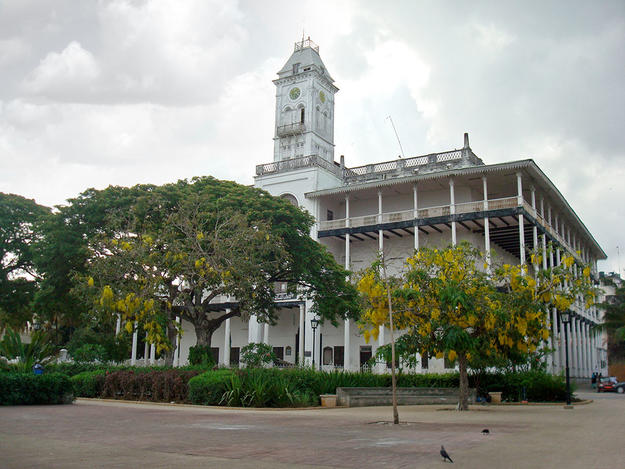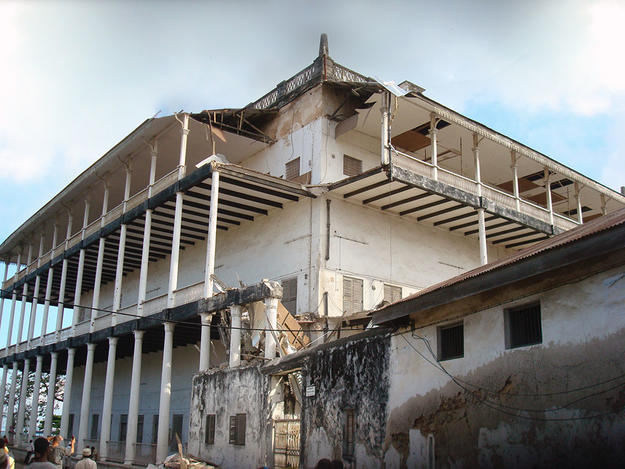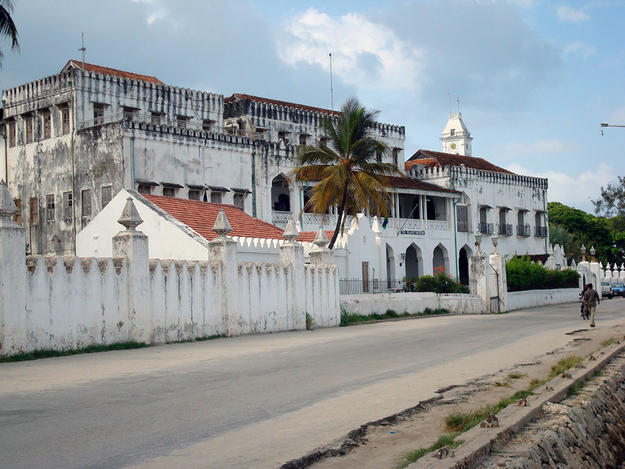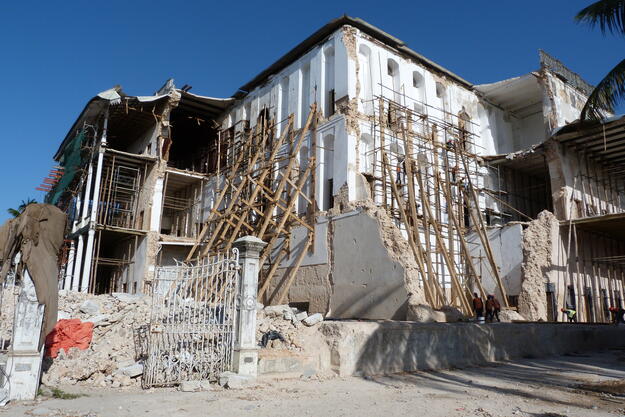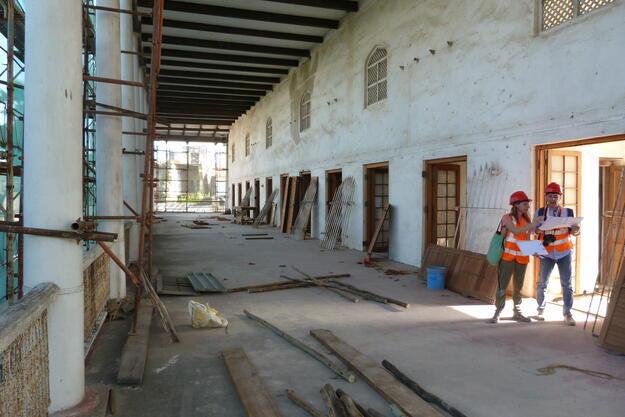House of Wonders and Palace Museum
Iconic fixtures of Stone Town's world-renowned seafront area, the House of Wonders and Palace Museum convey the cultural and architectural influences of Zanzibar, Britain, Portugal, and Oman over the centuries. The House of Wonders was once the most modern building in East Africa—it was the first building to have electricity and an elevator—and it mixes elements of European style and Zanzibari tradition by including cast iron columns, elaborate door carvings, coral rag, open central courtyards, and mangrove ceilings that together form a truly unique architectural achievement. Just next to it is the Palace Museum, built by the second sultan of Zanzibar in 1883, which is an opulent palace comprised of beautiful marble flooring, coral stone walls, and silver decorations. The palace was built in the Omani style as an extravagant Arab mansion, and holds many relics that offer a rare glimpse of a past era. The House of Wonders and Palace Museum have been converted into popular cultural destinations; the House of Wonders presents exhibitions dedicated to Swahili culture and the Palace Museum highlights its ties to Zanzibar's Omani history.
2014 World Monuments Watch
Approximately 30,000 travelers visit Stone Town per year, a number that reflects the importance of the tourism industry to the livelihoods of many Zanzibaris. Both buildings also host a number of public events every year, but have the capacity to do even more if restored. Despite high visitation and acknowledged importance, both buildings are in poor condition and at risk of structural failure due to environmental challenges and a lack of conservation work. In November 2012, a large corner of the House of Wonders collapsed, taking with it several historic iron pillars and threatening the structural integrity of the building and its façade. The roofs of both buildings are in a precarious state. They were included on the 2014 World Monuments Watch in order to draw attention to their plight both locally and internationally.
Conservation works at the Palace Museum
The site was one of nine recipients of a grant from American Express for the 2014 Watch. In partnership with the Department of Museums and Antiquities (DAMA) of the Ministry of Information, Culture, Tourism and Sport (MICTS), the award supported a survey and report on the structural integrity of the Palace Museum in order to prepare it for restoration work. In July 2015 a laser scan was carried out on site, and a diagnostic, conservation plan and condition survey were completed a month later. In November 2015 heavy rainfall caused the partial collapse of the Palace of Wonders’ roof. Works on the urgent issues identified in the subsequent report, such as the stabilization of the vertical masonry and floors as well as attention to wall cracking were carried out in 2016.
Watch Day
Watch Day took place in December 2015, with participants including representatives of government, CSOs, NGOs, business groups, academics, and the general public of Zanzibar, as well as representatives of the international community (embassies, NGOs, foundations). The purpose of the event, which included a guided tour, was to raise awareness of the general threat to the Palace and to demonstrate broad political consensus for action.
A Devastating Collapse
On December 25, 2020, a section of the most iconic building, the House of Wonders collapsed with the tragic loss of two lives. In January 2021, as part of a mission organised by UNESCO, WMF sent a team of structural engineers and architects to advise the Zanzibar government on emergency stabilization of the remaining part of the building to save the building from further collapse.

